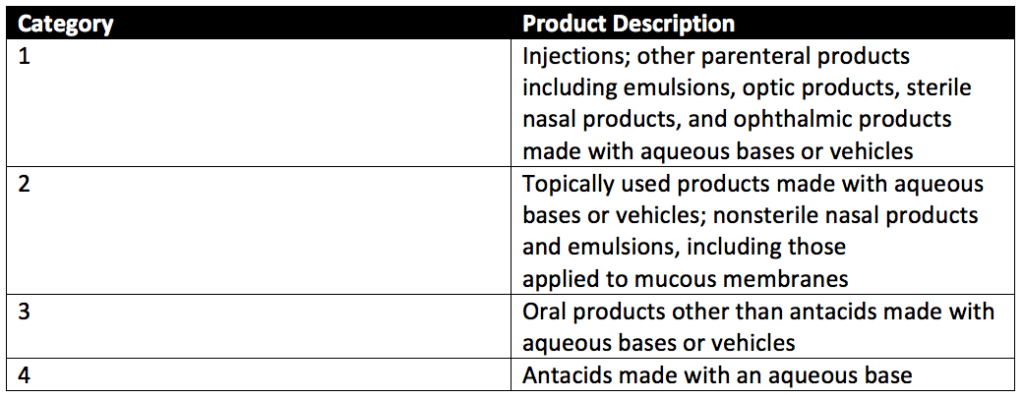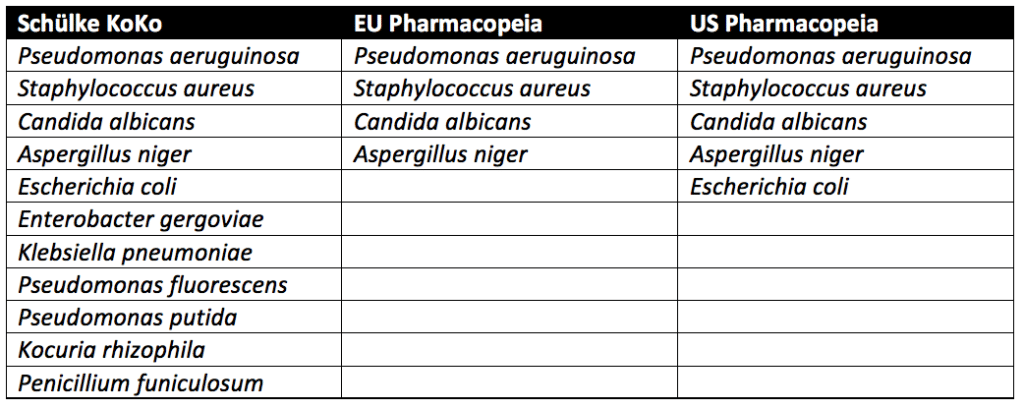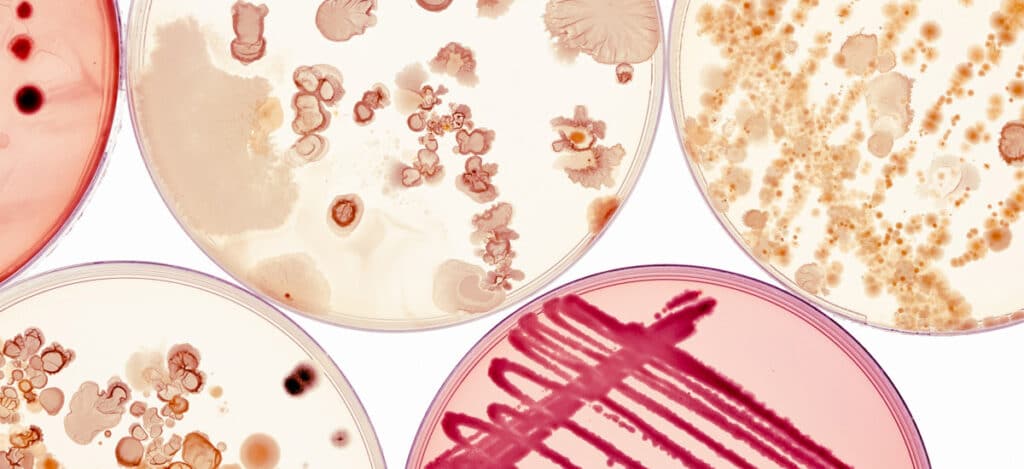Preservative Efficacy Testing And Package Integrity Testing Principles And Differences
What are preservatives?
Preservatives are substances mixed into creams, gels, and other liquids. Preservatives are used to prevent the growth of bacteria, fungi, and other microorganisms within a medical, cosmetic, household, or food product. Preservatives also help keep the freshness of the appearance of a product and keep its consistency intact over time.
What is preservative efficacy testing (PET)?
Preservative efficacy testing, also known as preservative challenge testing, determines the effectiveness of a preservative during its shelf life and evaluates how well a product withstands microbial contamination during use.
What is package integrity?
Package integrity has to do with how well a package stays complete and undivided to keep wrapped objects protected and sterile. A product package is considered both the product packaging itself and the product’s contents. Package integrity and container-closure integrity are terms that are used interchangeably. These terms are the same, depending upon the definition of container-closure integrity. In the past, container–closure integrity referred to a package that had passed or could pass a microbiological challenge test. However, package integrity and container-closure integrity are synonymous under the USP 1207 definition of container-closure integrity.
What is package integrity testing?
Package integrity testing has to do with testing how well a package stays whole and undivided to keep wrapped objects protected and sterile. Package integrity testing involves leak testing, seal quality, and functionality assessment of a packaging system.
What products require preservative efficacy testing?
Preservative efficacy testing can be used to determine the best preservative to use in your topical formulation and the minimum effective concentration needed to preserve the pharmaceutical, food, or biotechnology product being assessed. Topical formulations (gels, creams, ointments, and lotions) comprise a water or oil base that delivers various medications, natural substances (such as herbs), or moisture through the skin. Topical cosmetics contain preservatives to support the stability of the formulation and prevent microbial growth during repeated product use. Preservative challenge testing is also used for parenteral products containing multiple doses. In these products, antimicrobial preservatives inhibit the growth of any microorganisms introduced during repeated insertion and withdrawal to load individual amounts.
Preservative efficacy testing can evaluate four categories of products with preservative challenge testing. These product categories are detailed in Table 1 of USP 51, reproduced below.

What products require package integrity testing?
All packaged products require some level of package integrity testing.
How is preservative challenge testing performed?
Three approaches are used in preservative challenge testing. These approaches come from the Schülke KoKo Test, United States Pharmacopeia (USP), and the European Pharmacopeia.
Schülke KoKo Test vs. U.S. Pharmacopeia vs. European Pharmacopeia
Pseudomonas aeruginosa, Staphylococcus aureus, Aspergillus niger, and Candida albicans must be tested for in all cosmetic products sold in the European Union. In addition to the microbes above, testing with microbes known to lead to spoilage of cosmetic products is recommended but not required. In the United States, the USP guidelines require testing of Escherichia coli in addition to Pseudomonas aeruginosa, Staphylococcus aureus, Aspergillus niger, and Candida albicans. Spoilage microbes are not needed for PET. In contrast to the pharmacopeia tests, which only evaluate pathogenic microbes, the Schülke KoKo test evaluates product spoiling microorganisms. Schülke KoKo test’s spoiling microorganisms are based on decades of cosmetic testing experience from Schülke & Mayr in Germany.
USP preservative efficacy testing evaluates cosmetic products by exposing them to a single microbial strain at a time. Additional details on USP preservative challenge testing, which follows similar procedures to the European Pharmacopeia, can be found through reading our articles on Preservative Challenge Testing And USP 51 and Preservative Efficacy Testing For Medical Devices. In contrast, for the Schülke KoKo test, the single cultivated microbes are brought together into a mixed suspension to challenge the cosmetic product. A new mixed suspension is prepared for each of the six inoculation cycles for Schülke KoKo testing. Since the Schülke KoKo test uses a mixed microbe inoculation, it simulates microbial exposure of a product during production, filling, and use. Indeed, a product would likely be exposed to multiple microbes at once instead of one at a time. Overall, though different from the USP and European Pharmacopeia methods, the Schülke KoKo Test is a reliable test method for assessing the efficacy of antimicrobial preservation of cosmetic products.

First, cultures of Candida albicans (ATCC No. 10231), Aspergillus brasiliensis (ATCC No. 16404), Escherichia coli (ATCC No. 8739), Pseudomonas aeruginosa (ATCC No. 9027), and Staphylococcus aureus (ATCC No. 6538) are prepared. Stock cultures of these organisms are prepared by centrifuging an ATCC culture removing residual media from the prior culture and resuspending the microorganisms in a sterile suspension fluid. The suspension fluids for each microorganism referenced above are prepared at a microbial count of about 1 × 108 colony-forming units per milliliter (CFU/mL).
Preservative efficacy testing is performed in five sterile, capped containers. Suppose the product’s original container is sterile, can be entered aseptically, and holds an appropriate product volume. In that case, the original filled product containers may be used. Each of the five product samples is injected with a test suspension of either Candida albicans, Aspergillus brasiliensis, Escherichia coli, Pseudomonas aeruginosa, or Staphylococcus aureus. Each product sample is exposed to only a single microbe of the five listed, and all microbes are exposed to the product during testing. The microbial test suspension injected is between 0.5%- 1% of the volume of the product under assessment and is at a concentration of 1 × 105 and 1 × 106 CFU/ml of the product for category 1-3 products. The final concentration per ml of category 4 products is between 1 × 103 and 1 × 104 CFU/mL.
Each of the five product samples with their respective microbial injections is incubated at a simulated room temperature of 22.5 ± 2.5°C or 32.5 ± 2.5°C depending upon the microbe the product sample is exposed. Microbial counts are taken at 7, 14, and 28 days for most microorganisms tested. The plate-count method determines the number of CFU present in each inoculated product sample. This plate-count method is completed in duplicate. Once all counts are taken, the change in log10 of the concentration of CFU/ml is calculated for each microorganism. The requirements for antimicrobial effectiveness are met if no increase in microbial growth for the various organisms tested occurs within the timeframes specific to each organism. are met. No increase in microbial growth is defined as not more than 0.5 log10 units more than the previous microbial growth value.
How is package integrity testing performed?
As mentioned above, package integrity testing involves the leak, seal quality, and functionality testing of a packaging system. Package leak tests ensure no holes exist within the product-packaging system where water, microbes, or air can penetrate and reduce the quality or safety of the enclosed product. Examples of leak tests include bubble emissions testing and dye penetration testing. Package seal quality tests are benchmarks used to characterize and monitor the quality and consistency of various package seals. Examples of seal quality benchmarks include seal attributes (e.g., burst force), package component assembly parameters (e.g., application force). These benchmarks provide quantitative assurance of a packaging seal’s ability to protect its contents. However, these quantitative benchmarks do not guarantee or prove package integrity. Indeed, a package that meets seal quality requirements can have leak defects in package areas other than the seal when assessed. For example, a plastic bottle that meets seal quality closure tests may have a puncture within a thin area of the bottle’s neck that allows product leakage. Alternatively, packaging that meets initial leak tests may later develop seal defects that result in product contamination before use. For example, a poorly assembled container that fails seal quality testing could pass leak tests at the time of product manufacture and develop leaks later before reaching the end-user. Thus, seal quality testing is not the same as leak testing, and both sets of tests must be performed to evaluate and ensure package integrity fully. For additional information on common package integrity tests, see our articles on seal strength testing, bubble emissions testing, and dye penetration testing.

What are the differences between preservative efficacy testing and package integrity testing?
Product packaging, also known as a sterile barrier system (SBS), breaks down over time. The loss of SBS integrity occurs due to packaging material or adhesive degradation over time. Product packaging is designed to protect sterility and product functionality until an item is at the point of use or expiry. Thus, package integrity testing is critical for ensuring sterility maintenance of pharmaceutical products, medical products, and medical devices. In contrast, preservative challenge testing determines the best preservative for use and the minimum effective concentration needed to preserve multidose parenteral products, topicals products, food, or other healthcare items that contain preservatives. Together preservative efficacy and package integrity tests ensure that parenteral products, cosmetic products, and medical devices meet the regulatory safety criteria for sterility and antimicrobial activity.
Summary
Overall, preservative efficacy testing (PET) and package integrity testing are imperative for the regulatory approval of pharmaceuticals, cosmetics, and medical devices. These tests ensure that parenteral products, topicals, and medical devices have sufficient antimicrobial activity and high-quality, functional packaging to keep products sterile and patients safe during product use. All in all, ensure you choose a contract manufacturing organization that can support you with appropriate package integrity and preservative efficacy testing for your unique cosmetic, pharmaceutical, or medical device product needs.
MycoScience is a contract manufacturing organization specializing in Preservative Efficacy Testing, Package Integrity Testing and sterile syringe and vial filling. MycoScience also offers Bioburden Testing, Cleaning Validations, Microbial Aerosol Challenge Testing, Accelerated Aging, Microbiology Testing, Cytotoxicity Testing, Bacterial Endotoxin Testing, EO Residual Testing, Sterilization Validations & Environmental Monitoring services medical devices and allied industries. MycoScience is an ISO 13485 certified facility.
References
Michael J. Akers. Sterile Drug Products Formulation, Packaging, Manufacture, and Quality. Drugs and the Pharmaceutical Sciences. Informa Healthcare. 2010.
United States Pharmacopeial Convention. <51> Antimicrobial Effectiveness Testing. Rockville, MD, USA. 2021. (USPC <51>).
United States Pharmacopeial Convention. <1207> Package Integrity Evaluation- Sterile Products. Rockville, MD, USA. 2021. (USPC <1207>).
Sharing this in your social netwroks

